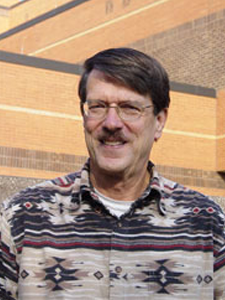
Douglas Cherkauer
Education
PhD, Princeton University
MS, University of Arizona
BA, SUNY Binghamton
Research Areas
Water Resources, groundwater, environmental issues and regulations
Current Research
Determining ground-water recharge rates in southeastern Wisconsin
The Southeastern Wisconsin Regional Planning Commission (SEWRPC) contracted with the USGS and Wisconsin Survey (WGNHS) to develop a ground-water flow model for southeast Wisconsin. They, in turn, contracted with me and my students to give them a measure of the spatial distribution of recharge rates to use as input. We calculated rates for about 250 subwatersheds using a regression model we had developed on a grant from the Wisconsin Ground Water research program (Sajjad Ansari’s MS thesis). It links the annual average rate of recharge to soil permeability, land slope, land cover and the depth to the water table within the watershed. Several students (Heidi Yantz, Paul Lenaker, Craig LaCosse among them) used GIS to obtain all the necessary inputs for the calculations. We’ve checked the accuracy of the values by simulating streamflow at a number of USGS gaging stations using the distributed-parameter watershed model PRMS (Precipitation Runoff Modeling System). PRMS generates a ground-water discharge to the stream (baseflow) which can then be compared to the calculated recharge rate for an area of interest. In subwatersheds where there are no net extractions of ground water by wells, then baseflow and recharge are essentially identical. The checking has shown that our empirical method is accurate to within + 20%.
Development of a ground-water flow model for Fond du Lac County, WI
As part of the DNR’s Source Water Assessment Program, they contracted with the WGNHS and us to create a fully three-dimensional flow model for the county. It would allow generation of capture zones for all the municipal wells in the area, including those for Fond du Lac, Waupun, Ripon and many more communities
Doug Carlson worked on the project for the year after he completed his dissertation and put together as detailed a model as the existing geologic information allows. He then calibrated it quite nicely and the model is now fully functional. The primary thing we learned from the process is that the hydrogeology of Fond du Lac Co. is extremely complex. The eastern part of the county has both the Silurian dolomite and deeper sandstone aquifer, but the Silurian (and the underlying Maquoketa shale) pinch out to the west. There the sandstone is unconfined and interactive with surface water systems. Carbonate units, which are protected from weathering by the overlying Maquoketa to the east, have been exposed in the west and have very different conductivities. At the base of the Paleozoic aquifers, the Precambrian surface has over 500 feet of relief (partly due to faulting) in the area. In fact, there are locations in the county where the rock subcropping beneath glacial deposits is the Precambrian. On top of that, Bob Taylor and alumni John Jansen and Pat Jurcek (among others) have demonstrated that there is considerable saline water at the base of the Paleozoic system.